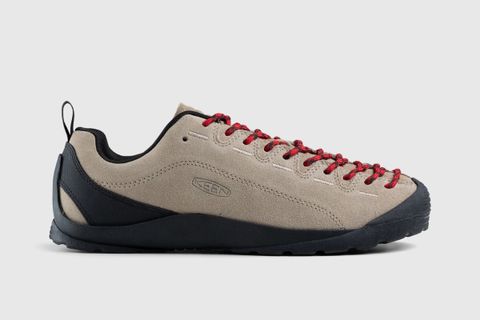What Quiet Luxury Means For Beauty — And Why It's a Scam
In case you missed it, ostentatiousness is so last year. By now, we all know what quiet luxury is — in short, it's a mode of dressing that signals wealth, but only to those in-the-know enough to recognize its inconspicuous signifiers: say, the stitching on a Maison Margiela shirt or the white soles of Loro Piana shoes.
These items — along with wares from the likes of Brunello Cucinelli, The Row, and Hermès — have become mascots of a quietly luxurious wardrobe. Our fascination with stealth wealth is beginning to expand beyond fashion, infiltrating our taste in interior design (according to Homes and Gardens, "Japandi" design and neutral colors are poised to take over) and food (one TikToker says New York City's Nougatine "screams" quiet luxury).
But how does our newfound obsession with austere affluence translate to beauty?
In Succession, the TV show that kickstarted the quiet luxury hullabaloo, Shiv dons a Tom Ford tuxedo jacket ($7,070) and Logan accessorizes with Loro Piana baseball caps ($390). If you look closely enough, you’ll also catch a glimpse of the Roys’ beauty routines.
In season four, Kendall's bathroom counter boasts a bottle of Augustinus Bader's The Rich Cream ($290), while a jar of Tatcha's Dewy Skin Cream ($70) is perched atop Shiv's dresser. In season three, Roman boards a private plane stocked with Ouai shampoo (refills are $64).
At first glance, these products might seem misplaced in the Succession universe. While pricey, Tatcha and Ouai are beloved by teens on TikTok, hardly the same demographic as the Roys of the world. But I'd guess their consumer base isn't what makes these cosmetics appealing to the Roys — rather, it's the subtlety of their effects.
Let me explain. The money, time, and effort that the Roys put into maintaining their looks isn't overtly visible — it's signaled through clear skin and glossy hair rather than eye-catching adornments such as bright lipstick and painted nails. Shiv's cheeks perpetually glow and Marcia's bob falls into perfect place seemingly by magic, not Tatcha moisturizer and Ouai conditioner.
Of course, the Roys' looks aren't the product of wizardry. On the surface, they might appear labor-less. In reality, they're the result of expensive, carefully curated skincare and hair care routines, perhaps augmented by other behind-the-scenes beauty boosters: facials, injectables, dentistry.
In an article for Harper's Bazaar, Clara Strunick defines quiet luxury beauty as "high-maintenance, so that you can be low-maintenance." Here, Strunick alludes to the paradox at the heart of quiet luxury: It creates the illusion of ease, seemingly subverting the expectation that we expend time, money, and energy on our appearance. But there's nothing subversive about quiet luxury — in the end, all it does is bolster our rituals of consumption.
Instead of logo-plastered purses, quiet luxury tells us to purchase a tailored black coat. Instead of red lipstick, try face cream. Therein lies the scam: No matter what you purchase, you're still conforming to a system that equates consumption with status. The Loro Piana purist is guided by the same agenda as someone who carries a "ludicrously capacious" bag.
It's difficult to escape the noise that trends like quiet luxury create, especially when appearance — everything from our hair to our clothing — functions as social capital. I wish I could tell you to opt out, to refuse to buy in to quiet luxury and everything it stands for. But that's not realistic. Instead, I'll leave you this: Wear the sequined purse. Cover your face in neon eyeshadow. In a few years, it'll be back in style anyway.


